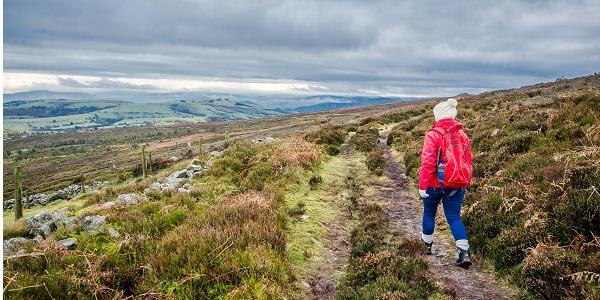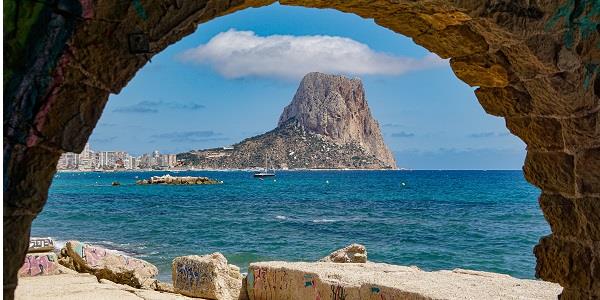
Walkers enjoying a holiday in the Costa Brava are in for a treat. If you make the 35-minute drive from our Javea properties to the town of Calpe (an hour by bus), you won’t have to look far to spot the enigmatic Penon de Ifach. Towering over the bay and surrounded by the sparkling blue waters of the Mediterranean, this 332-metre-high rock has been an iconic part of the town’s skyline for as long as anyone can remember, attracting thousands of visitors every year.
 In fact, the history of this spectacular landform dates all the way back to the 4th and 3rd centuries BC. Back then, an Iberian village was located at the foot of the rock. Over time, this was overtaken by the Romans, who moved the settlement to the narrow strip of land (known as an isthmus) joining the rock to the mainland. However, despite this eventually turning into the main town of Calpe, evidence suggests that people lived on the sides of the rock itself right up until the Middle Ages.
In fact, the history of this spectacular landform dates all the way back to the 4th and 3rd centuries BC. Back then, an Iberian village was located at the foot of the rock. Over time, this was overtaken by the Romans, who moved the settlement to the narrow strip of land (known as an isthmus) joining the rock to the mainland. However, despite this eventually turning into the main town of Calpe, evidence suggests that people lived on the sides of the rock itself right up until the Middle Ages.
As time went on, Penon de Ifach became a landmark for sailors and mariners, as well as a watchtower guarding Calpe against approaching pirates and invaders. The municipality of Calpe owned the rock until 1872, when it became privately owned. It passed through several hands before 1987, when it was declared a nature reserve. This means development can never take place here, retaining the iconic rock’s beauty well into the future.
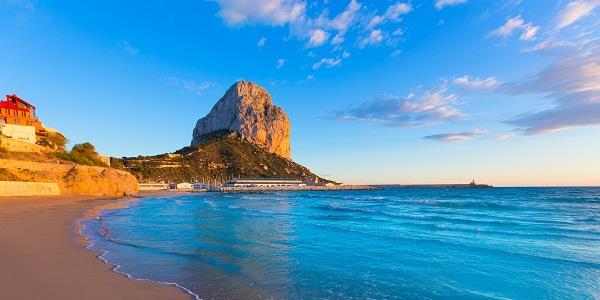
At 45 hectares, Penon de Ifach is one of the smallest nature reserves in Europe. It provides a wonderful home to a wide collection of flora and fauna, including several rare and endangered species and over 300 species of animals. The rock itself is actually a limestone outcrop from the sea, with the link to the mainland created by millennia of debris and sediment falling from its surface.
At the base of the rock, you’ll find many varieties of plants common to this part of the Mediterranean. However, as you ascend, you’ll notice that these give way to more Alpine plants. Some of the rarer varieties include the Silene hifacensis (below, left), which is nearly extinct across most of the world, Mountain scabious (below, right) and Thymus webbianus. These delicate, yet beautiful plants can be found growing in the crevices and ledges of the sheer rock face, protected from the elements and human interference.

Meanwhile, there are also up to 60 bird species which nest on Penon de Ifach at different times of the year. These include the winter wren, shag and peregrine falcon (Please note, in order to protect these rare species, walking and climbing are not allowed during nesting season). You’ll also find ocellated lizards and montepellier snakes, as well as shrews, rabbits and hedgehogs living amongst the rocks and foliage.
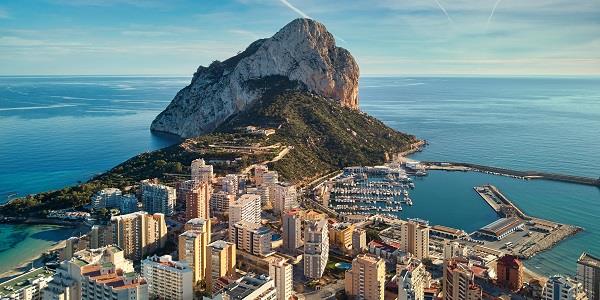
However, the main draw of Penon de Ifach are the walks. Most people opt to follow the ‘Red Route’, which is the main pathway up, starting at the information centre and climbing the north side of the rock. This path will lead you past these eight landmarks, several of which offer spectacular panoramic views over the town and bay:
- Western vantage point
- Remains of an Iberian village
- Windblown pines
- Tunnel
- Botanist Cavanilles vantage point
- Fork
- Guard post
- Summit
There are two main parts of the walk – the winding path to the tunnel and the tunnel to the summit. The first section is certainly the easiest; although it is steep, the ground is even. However, it can get very hot and humid, thanks to the thick canopy of trees. Make sure to make the most of the Western vantage point. This is a great place to take a break and enjoy a drink of water, while also admiring some awe-inspiring views of the coast and surrounding area. This section of the route will also take you past the remains of an Iberian village, dating back over 2000 years, and the ‘Windblown Pines’, where the strong wind has caused the trees to grow into unusual shapes.
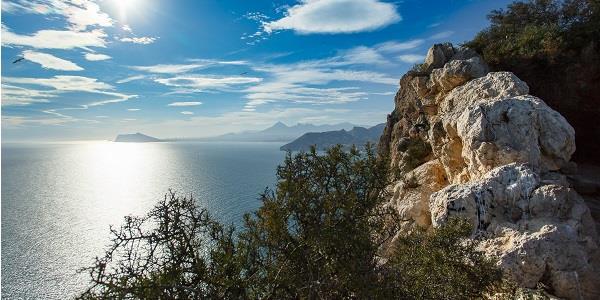
At the end of this section, walkers find themselves at a tunnel which travels straight through Penon de Ifach to the north-eastern side. From this point on, hiking boots or strong trainers with good grip are recommended, as the rocks become uneven and slippery. Once you exit the tunnel, you’ll be met with another vantage point with a spectacular view of Fossa beach.
Following this, this path changes into narrow, rocky trails which can become slippery and require some sure-footedness. During this part of the walk, you’ll find that the route splits at the Fork. One path will take you to the Guard post, which has yet more beautiful scenery to enjoy. Take a break on the small lookout platform and enjoy the exceptional ocean views. This is the shorter and easier path to follow, so if you found the previous sections challenging, this may be a better option.
If you choose the path from the Fork up to the Summit, you’ll tackle the most difficult part of the route, which includes some scrambling and uneven surfaces. However, the views from the peak are certainly worth the effort; panoramic views span between Serre Gelada to Calpe, all the way to Punta de Moraira. It’s regularly called one of the best views in the whole of the Costa Blanca.
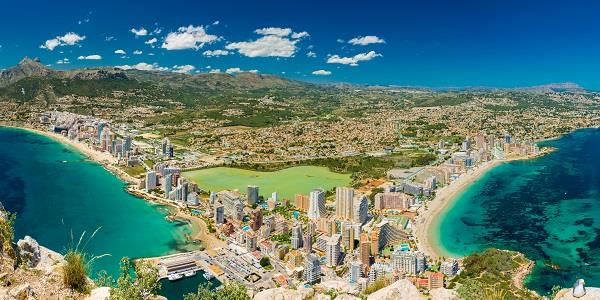
For those who like the idea of really challenging themselves, there are also some sport routes for climbers. These span a range of grades and abilities and most are climbed frequently, meaning they are very well-equipped. There are some loose rocks on the route, so helmets are essential.
We recommend attempting the walk in the morning or evening to avoid the worst of the heat. Plenty of water, a hat, sun cream and sturdy footwear are also essential… as is a camera! The spectacular views are certain to be a highlight of your break and something you’ll want to share with friends and family back home. Understandably, there are no facilities on Penon de Ifach, so you’ll have to bring everything with you and, of course, take it home again afterwards!
Once you’ve scaled this iconic landmark, you’re bound to want to toast your success and refuel. Calpe itself has plenty of opportunities to grab a bite to eat, including a selection of restaurants right on the beach. Alternatively, make the trip inland to Calpe’s Old Town, where the wide streets still retain a sense of history and tradition. Here you’ll find plenty of smaller, traditional tapas bars serving all manner of delicious bites.
At the end of the day, head back to Javea and relax in your comfortable holiday accommodation. Rest those tired muscles while relaxing by the pool or sharing a barbecue on a balmy Spanish evening. Click here to find out more about how you can enjoy a stay.
